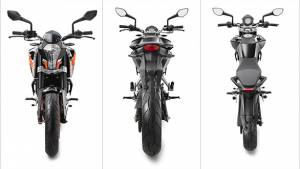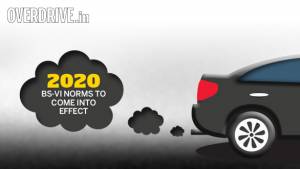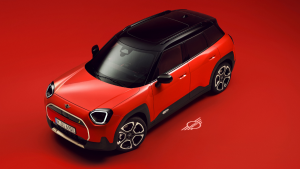Moving to cleaner emission norms
If you just bought a new motorcycle, the sales pitch definitely included the word "BS-IV compliant". BS or the Bharat Stage emission standard was brought into effect in 2000 by the central government. These standards were set to keep the harmful air pollutants emitted by the internal combustion engines under check. The norms were based on the European regulations, also known as Euro norms. BS-III standards were brought into effect in 2005 followed by BS IV in April 2010 for passenger cars.
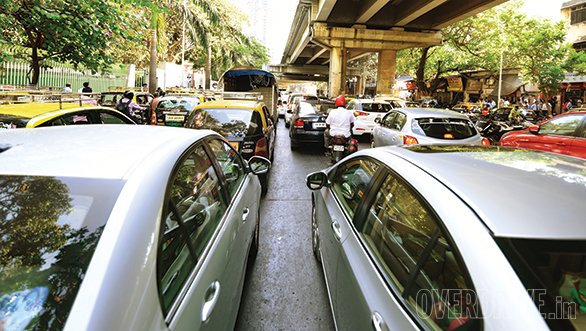
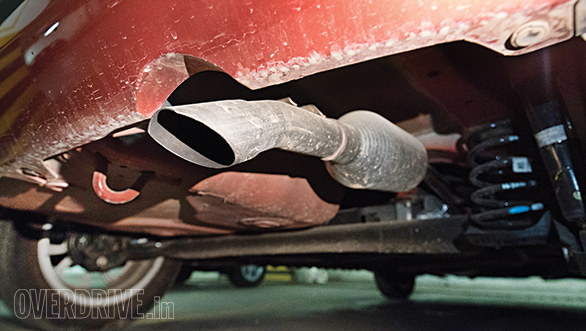
In its first phase, BS IV for four-wheelers was introduced in 33 cities which included the metros and then was introduced in other parts of the country in a phased manner. Vinod Dasari, president, SIAM, states that the BS-IV norms were delayed due to the non-availability of BS-IV fuel across the country, forcing some categories of vehicles especially the commercial ones to remain at the BS-III stage till April 1, 2017. Under the BS-IV emission standards, the sulphur content in fuel was reduced from 150ppm to 50ppm in petrol engines while for diesel motors, it was brought down from 350ppm to 50ppm. The presence of sulphur in the atmosphere results in eye irritation, asthma, chronic bronchitis and even heart failure. Additionally, according to ARAI, the BS-III emission limits for petrol-powered two-wheelers were 1.00g/km for carbon monoxide (CO) and 1.00g/km for 1.00g/km for hydrocarbon and nitrous oxide (HC + NOx). The same for BS-IV compliant vehicles is 0.75 for both CO and HC+NOx. The difference between BS-III and BS-IV emission norms is almost double. The air pollution caused by BS-IV compliant vehicles will be almost half of what BS-III compliant vehicles emit.
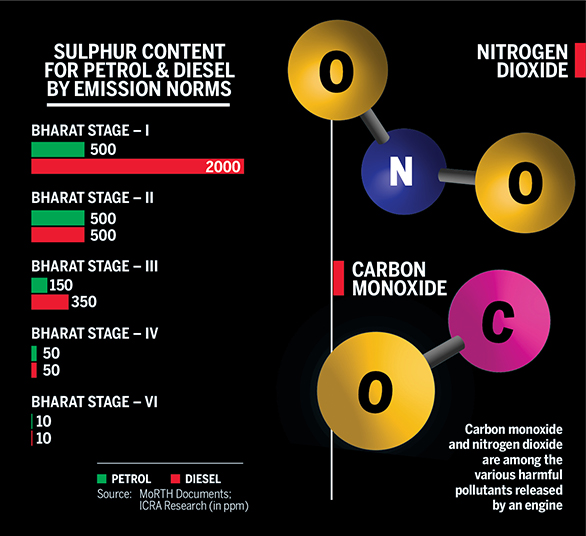
Last year, the Supreme Court's ruling halted the registration of BS-III two-wheelers in Delhi. This had severely affected the motorcycle manufacturers in the country. However, after SIAM explained the negative impact and raised the issue with the Delhi RTO, the authorities decided to give one year to all the two-wheeler manufacturers to make their products compliant with BS-IV emission norms by April 1, 2017. While most two-wheeler manufacturers did migrate to BS IV way before the stipulated limit, the rest chose to liquidate their inventory at high discounts before March 31, 2017.
Automobile manufacturers were already gearing up for the transition from BS-III to BS-IV norms. From April last year, Toyota stopped manufacturing BS-III cars. India's largest automobile company, Tata Motors, too had a swift transition from BS III to BS IV as most of their vehicles were available in BS IV. The company stated that the BS-III ban has not had a significant impact on their passenger vehicles but some decline in sales was seen in the heavy vehicle category.
All BS IV diesel engines are developed with a high-pressure common rail system with turbocharger and EGR (exhaust gas recirculation to reduce NOx emissions in petrol/gasoline and diesel engines). Apart from the environmental benefits, these additions improve performance and overall fuel economy.
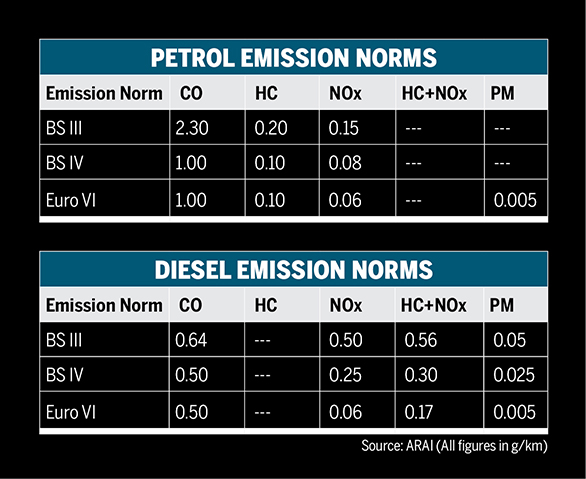
After BS IV, the next big leap will be the BS-VI emission norms that come into effect in April 2020. It will be introduced in two phases. In the first phase, the threshold from the on-board diagnostic (OBD) system will be applicable for all vehicles manufactured on or after April 1, 2020, whereas the final threshold will be applicable from April 1, 2023. The emission target from both these phases is identical to that of Euro VI. The Indian auto industry will be the first in the world to leapfrog from BS-IV to BS-VI emission norms in a short period of three years by 2020, whereas even some of the developed countries took about 10 years and also progressed stage by stage without skipping. However, the big challenge for the auto industry in transforming to BS-VI norms will be the availability of BS-VI compliant fuel. And that would need an additional investment of `80,000 crore by the refineries. Toyota maintains that the oil and gas industry will provide BS-VI fuels before 2020 at least six months in advance to enable the auto industry to synchronise its production of BS-VI compliant vehicles accordingly. Mercedes too has said that they are ready to bring in BS-VI compliant cars as early as next year provided the required fuel quality is available.
At the manufacturer level, the changes that will be done on the present BS-IV diesel vehicles include addition of high-pressure fuel-injection system, low-pressure EGR, ECU (Exhaust Gas Recirculation) upgradation, additional sensors, modification of exhaust system components with addition of diesel particulate filter and NOx treatment system. In petrol models, it will be at exhaust after-treatment system with tweaked catalytic converters, and upgradation of ECU and sensors.
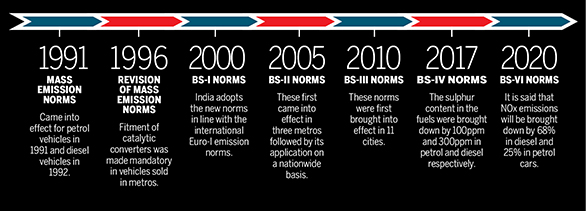
Automobile manufacturers have already resorted to downsizing and opting for smaller-displacement motors as they are more fuel-efficient and provide nearly the same power output as bigger engines. Tata Motors believes that the extremely high cost of the BS-VI emissions technical solutions for diesel offer an opportunity to substitute smaller diesel motors. Additionally, alternate fuels are expected to get more importance. It is also said that hybrids will play a major role in BS-VI emissions. Toyota claims that hybrid and electric vehicles are likely to emerge as the reasonable alternatives to diesel and petrol engine vehicles in the country as they deliver same level of performance as their conventional counterparts but with a higher fuel efficiency. The Japanese car manufacturer has already witnessed the shift in buying trend for its hybrid Camry compared to the regular model. Other leading car manufacturers like Hyundai, Mahindra and Volkswagen too will be getting hybrids and electric offerings to bring down the carbon footprint in the country. Driving pleasure combined with higher fuel efficiency and lower emissions? That seems like a sure-shot fun recipe while being environmentally conscious.
Related Stories
Top Stories
Latest Videos
Most Popular
- Budget Sportbike Showdown: Kawasaki Ninja 500 vs Aprilia RS 457 vs Yamaha YZF-R3
- 2014 Triumph Daytona 675 vs 2024 Kawasaki ZX6R - A Decade of Evolution in Supersport Motorcycles
- Mumbai-Pune Expressway speed restrictions updated
- Nissan Magnite EZ-Shift review - is the AMT any good?
- Nitin Gadkari states that tax on Hybrids should be reduced to 12 percent in the coming future
